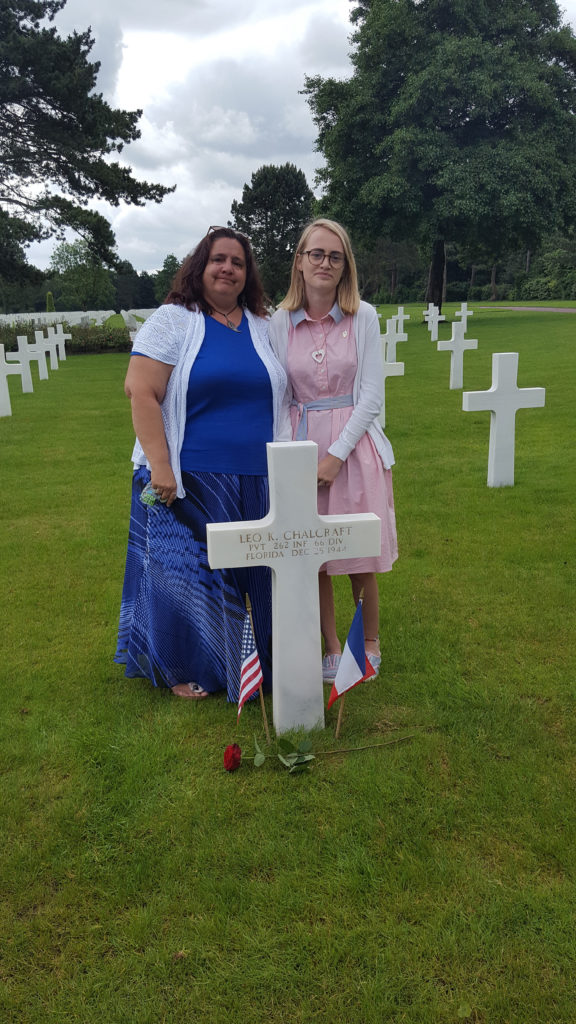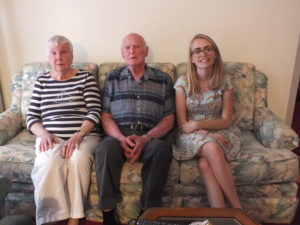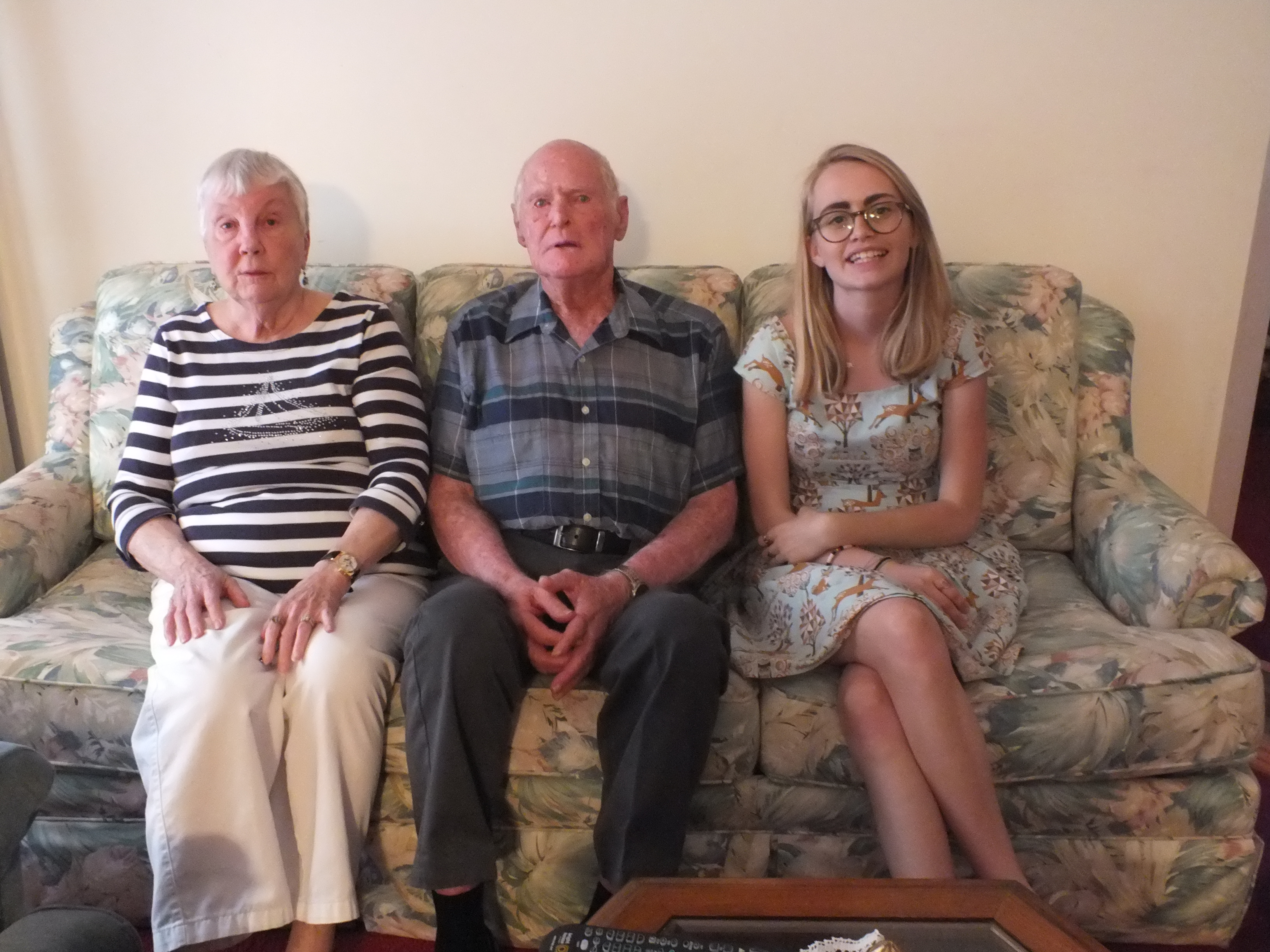It was Christmas Eve, 1944, but no one was celebrating.
Instead, a group of soldiers was being hurriedly transported to Cherbourg, France via the S.S. Léopoldville. The unit was slated to arrive at what would have been the Battle of the Bulge.
Then, five miles from Cherbourg, the ship was torpedoed.
Approximately 800 people died, among them, Pvt. Leo K. Chalcraft, only 19 years old.
“It’s a very tragic story,” said Deborah Pettingill, a graduate student in the Florida Studies program at USF St. Petersburg. “I had a hard time with it from day one, because I have a 19 year old son. Every time I read the stuff, every time I look at it, I see his face. To imagine that being my son, at that age…it horrifies me.”
Pettingill, who teaches advanced placement U.S. History at Largo High School, spent roughly six months researching the life of Chalcraft with former student Konner Ross as part of a National History Day project.
There are different projects available under the umbrella of the National History Day program, which pairs students and teachers to research specific historical subjects. This summer, Pettingill and Ross competed as a team in a special offshoot of the program, the Normandy: Sacrifice for Freedom Albert H. Small Student & Teacher Institute’s Silent Hero project.

Pettingill happened to discover the Institute one day while browsing the National History Day website.
“At the beginning of November last year, I stumbled across it and thought, ‘Wow, this looks amazing.’ You had to apply for it with a student, so I approached Konner, who had been in my honors American History class, and she immediately responded.
The application for the Institute project was, Pettingill said, “pretty extensive.” Not only that, but the Institute was highly selective, choosing a total of only 15 teams across the nation to participate in the program. Not knowing if they had a chance, the pair applied.
“You can’t get it if you don’t try,” said Pettingill.
On the very last day of school for the semester, she got the call.
She and Ross had been selected.
“I’m afraid I was overly excited,” said Pettingill.
There were two parts to the project: teams participated in an online class that focused on educating them about World War II and D-Day, with assignments and readings due every week. The teams also had to research a soldier from their home state that was buried in the Normandy American Cemetery in France.
Pettingill and Ross decided that they wanted a soldier who was not only from Florida, but had specifically lived in either Pinellas or Hillsborough County. Pettingill had a connection with a World War II historian who helped the team narrow down their selections, and Chalcraft was chosen.
“We got his military record and were able to look at his service information, when he joined, where he trained, where he was stationed, and where he died and was buried,” said Pettingill.
“We found census records that showed that he had lived here in St. Petersburg, and who his parents were, and where they lived. We also used Ancestry.com to work on making a family tree and try to research who his family members were.”
In the process of learning about Chalcraft’s family heritage, ultimately, the pair was able to locate his younger brother, Albert.
“That was one of the most amazing things,” said Pettingill.
“One night, I Googled something and came up with a Facebook post of a car dealership in Crystal River that had posted a picture. It had a photograph of this older couple in front of this new car that said, ‘Congratulations, Albert and Charlotte Chalcraft on buying your new Kia.’ How many Albert and Charlotte Chalcrafts can there be?”

After more research, Pettingill and Ross were able to find an address for the Chalcrafts. They sent out a letter explaining their project, and a couple of days later received a call from Charlotte confirming the family tie.
“They live in Inverness,” said Pettingill. “We made arrangements, and Konner and I went up and visited them and interviewed them. It was pretty amazing.”
Once there, the Chalcrafts shared a box of Leo’s personal items with the pair that Leo’s mother had passed down to Charlotte. Included in the box were newspaper clippings, Leo’s wallet, his Purple Heart and the flag from his burial.
In addition to visiting the Chalcrafts in Inverness, Pettingill and Ross traveled to Washington, D.C. and Normandy for the project with the other 14 teams.
“The culmination of all this research was that over the summer, they brought us to D.C. for a week. We did things like research of the National Archives, as well as work with various historians,” said Pettingill.
Then, the teams flew out to Normandy for their second week of travel. There, the teams were able to see all of the places they had studied.
“We visited the sites of these things that we had been reading about,” said Pettingill. “We stood on Omaha Beach and on Utah Beach, and many of the other places where these major battles took place. Omaha Beach was like a religious experience. We were there at low-tide, at dawn, basically the time when (the soldiers) would have been landing.
“I walked out to the waterline and looked back. After all the research and the learning, to stand there and look back and (think), ‘This is it.’ Knowing what was there and what they faced when they got off of those boats…it amazes me. I don’t know how they did it. I think of myself and I think of my son. How did these men do what they had to do? I don’t think I could do it. It was very emotional.”
At the gravesite at the Normandy American Cemetery, each of the 15 students delivered a eulogy they had written to honor the soldiers.
“My brother passed away at the age of 19, the same age as Leo,” wrote Ross in Chalcraft’s eulogy.
“I have never in my life felt anything more painful. The loss of someone so young, someone who will never experience or see so many things that you can, changes you forever. Everything reminds you of them.”
Part of the project’s goal was to make sure that the memory of the soldiers would endure.
“The whole idea of this project is that silent hero,” said Pettingill.
“It’s making the point of keeping alive and bringing to the forefront the memories of these soldiers who are not famous people, who are not the generals, who aren’t the flyboys, but who, without, this war couldn’t have been won.
“That’s kind of the whole idea of this project, is these everyday people. It’s taught me the importance of the individual, and how you have to look at the individuals along with the big picture. What an incredibly amazing experience the whole thing has been. I would say life-changing.”
For more information on the life of Leo K. Chalcraft, visit http://31968301.nhd.weebly.com/.



